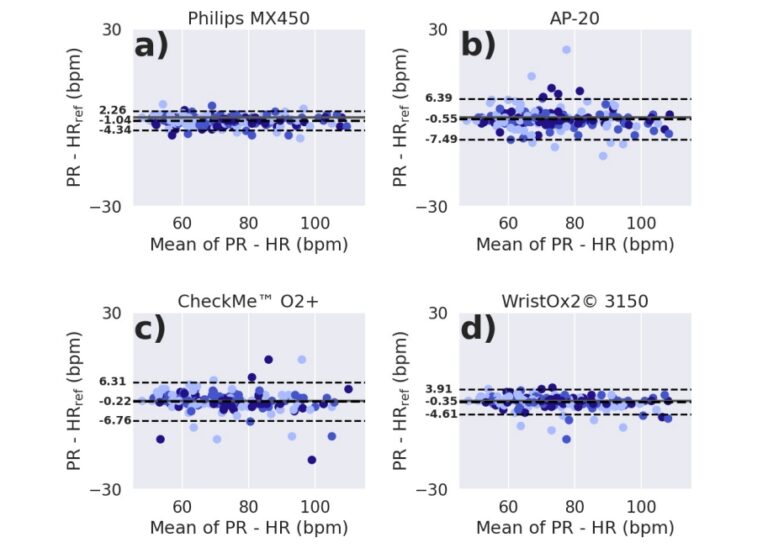Mianyang Central Hospital, China, is a comprehensive hospital that integrates medical care, teaching, research, emergency medical care and disaster medicine. Due to its location in a disaster-prone area, the speed and accuracy of ECG testing is extremely demanding, requiring the use of accurate ECGs to quickly determine a patient’s status and facilitate timely resuscitation. However, most ECG doctors are part-time ultrasound doctors and are unable to perform the more specialised dynamic ECG analysis. As a result, there is a high degree of difficulty in the practice of ambulatory ECG in hospitals.
In April 2015, China Mianyang Central Hospital cooperated with Lepu AI Division to establish a remote ECG monitoring center, applying AI-ECG to the remote dynamic ECG network system, with an artificial intelligence ECG analysis platform as the core and multi-model monitors as the terminal entrance to efficiently and accurately process ECG data for clinical healthcare staff and patients. Form a real-time and comprehensive monitoring network, combine the ECG monitoring system and management system into one, and provide all-weather, full-process chain, full-cycle cardiac care management and services.

Meeting the Needs of Clinicians from AI-ECG
AI-ECG technology is centered on medical-grade products, data cloud platforms and artificial intelligence analysis technology, supported by full-process monitoring services, turning smart medical care into reality. Through artificial intelligence technology, real-time early warning, monitoring, analysis and diagnosis are carried out for in-hospital wards and out-of-hospital users. Many innovations in medical-grade big data and ECG medical big data management have helped the hospital to realize real-time ECG data transmission, multi-level diagnosis and treatment and remote diagnosis. The model provides hospitals and patients with more convenient, smarter, and more humanized medical services.
Importance of Integrating AI into the Practice of Cardiology
Before AI-ECG entered the hospital, the daily monitoring capacity of the Cardiology Department was 10-20 people, and it took about 50 minutes to complete each report. After AI-ECG is settled in the hospital, the daily monitoring capacity of the cardiac function department can reach 120 people. It only takes 1 minute to review each report at the fastest, and the diagnosis report can be sent to the grass-roots unit within 5 minutes on average. The number of people who complete the dynamic ECG report every day is twice as high as before, and the ECG report can be reviewed for the quality control of the regional intranet unit.
Doctors no longer need to accompany patients to complete the entire ECG monitoring process, nurses can complete the preliminary data collection work by themselves, and the AI-ECG data center conducts preliminary diagnosis, helping doctors save at least three-quarters of their working time, and Limited professional resources are freed from some low-tech and repetitive tasks.
In addition, in the face of the increasing demand for ECG diagnosis, through the centralization and sharing of data, the hospital has not recruited additional ECG diagnosis doctors. Through the existing AI data center diagnosis and the auxiliary judgment of higher-level hospitals, the existing diagnosis needs can already be met. . At present, it saves about 50Wusd of labor cost for the hospital.

Significance in Using Artificial Intelligence for Electrocardiography-Based Diagnosis
The heart remote monitoring center is on duty 24 hours to ensure real-time ECG monitoring.
Real-time transmission
The remote ECG monitoring technology has the functions of 24h continuous cardiac electrophysiological abnormality detection and early warning, GPRS wireless two-way data transmission and fixed telephone digital transmission, etc., which can monitor the patient’s heart in real time for a long time.
The combination of wearable ECG equipment and AI realizes the construction of intelligent remote ECG monitoring terminals and cloud big data platforms in hospitals. The wearable device collects ECG signals and transmits them to the ECG diagnostic centre in real time using wireless communication technology. The AI-based ECG diagnostic system trained on big data achieves 24h real-time acquisition and monitoring without regional or time restrictions through efficient and accurate big data comparison.
The successful establishment of the Critical Alert Referral Network allows for early warning of critical events at short notice. For example, patients with indications for interventional procedures, such as PCI, radiofrequency ablation and pacemaker implantation, are screened for early intervention in a timely manner.
Hierarchical diagnosis and treatment
AI-ECG diagnosis plays a preprocessing role in the business of the entire platform, pre-classifies the diagnostic needs according to critical, positive, and normal, and then optimizes the relevant business processes for different classifications.
AI-ECG helps to improve the diagnosis rate of heart diseases and helps patients with early screening, early detection and early treatment.
Mild patients do not need to stay in the hospital for a long time to complete the monitoring.The remote heart monitor worn by the patient can send the ECG to the cloud platform in real time, and automatically give early warning through artificial intelligence. Patients can also manually send an ECG to the AI for diagnosis when they feel unwell.
For critically ill patients with malignant arrhythmia, myocardial ischemia, myocardial infarction, etc., remote ECG monitoring can be used to be alert to changes in the condition in time, so as to adjust the treatment plan and effectively reduce the emergency and hospital admission rate.
Telemedicine
The data transmission of remote monitoring is not limited by time and place, and can provide patients with life support services in a timely manner, inform life-related risks in advance and remind them to seek medical treatment, so as to reduce the medical cost and life risk of patients. It has made a great contribution to shortening the call time for hospitals and balancing the differences in regional treatment levels
Among them, the treatment effect of atrial fibrillation has been significantly improved. Subsequent treatment of atrial fibrillation mainly includes drug therapy and catheter ablation.
In drug treatment, it usually takes 3-7 days for patients to take antiarrhythmic drugs to achieve efficacy. After the introduction of AI-ECG, the hospital observes the efficacy of drugs through remote ECG monitoring, and adjusts drug doses and programs.
In catheter ablation therapy, the hospital conducts postoperative follow-up through remote ECG monitoring to observe whether the patient has completely eliminated atrial fibrillation and finds signs of recurrence as soon as possible to avoid deterioration of the condition.
Practical value of AI-ECG clinical application
AI-ECG has made outstanding contributions in the treatment of critically ill patients.
For intractable diseases, doctors can find valuable medical record information from the AI-ECG cardiac big data case database, and retrieve similar cases from a large number of medical records to assist in diagnosis.
At the same time, AI-ECG can also extract the case big data of a single disease for scientific research or clinical reference. ECG artificial intelligence technology not only improves the efficiency of ECG reading, reduces the incidence of sudden death and complications, but also enables doctors to grasp the patient’s situation from multiple dimensions, customize personalized diagnosis and treatment plans, and use big data to manage heart health.

As of June 30, 2021,Mianyang Central Hospital has completed 51,527 remote ECG monitoring visits. Successfully disposed of 4592 times. 4630 times of critical value warning. The lower level hospitals completed remote ECG monitoring 3055 times. Successful disposal 213 times. 217 emergency value warnings. Total number of warnings 23586 times.
The chief physician of the Cardiology Department said: “AI-ECG has helped us to share the very tedious daily work. Before we had AI diagnosis, we had to spend too much time on repetitive work, and the experienced cardiac diagnosticians were often too busy and very inefficient, now AI-ECG Platform has perfectly helped us to solve this problem.”
The president of Mianyang Central Hospital highly affirmed AI-ECG: “AI-ECG improves the work efficiency of doctors and nurses, increases their income, and breaks through the bottleneck of limited services and development caused by the lack of cardiac function departments. “
Reference:
1.Comparing the performance of artificial intelligence and conventional diagnosis criteria for detecting left ventricular hypertrophy using electrocardiography. EP Eurospace. https://academic.oup.com/europace/article-abstract/22/3/412/5652054?redirectedFrom=fulltext. Last accessed August 2021.
2.Detection of Hypertrophic Cardiomyopathy Using a Convolutional Neural Network-Enabled Electrocardiogram. Journal of the American College of Cardiology. https://www.jacc.org/doi/full/10.1016/j.jacc.2019.12.030?_ga=2.200274285.2130491331.1586866456-722400083.1586006686. Last accessed August 2021.
3.Screening for cardiac contractile dysfunction using an artificial intelligence-enabled electrocardiogram. Nature Medicine. https://pubmed.ncbi.nlm.nih.gov/30617318/. Last accessed August 2021.





